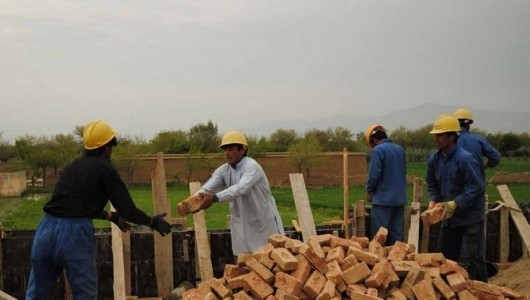National Solidarity Program Creates Infrastructure in Rural Afghanistan

The first step to helping those in need is having a supportive government enforcing small-scale changes. The National Solidarity Program (NSP) located in Afghanistan is the rehabilitation and development program for rural parts of the nation. It has supported the rights and needs of 18 million people and has helped to construct infrastructure, meet basic community needs, administer democracy and save lives.
The NSP is a program working for the Government of the Islamic Republic of Afghanistan under the jurisdiction of the Ministry of Rural Rehabilitation and Development (MRRD). It has a set budget of $2.6 billion for the years between 2003 and 2016.
The Nangarhar Province has demonstrated resiliency thanks to NSP. Since NSP’s installation in 2003, it has crated 32,000 Community Development Councils (CDCs) within 36 districts of each province in Afghanistan. It has financed 65,000 projects.
In 2013, NSP was known as the largest development program in Afghanistan. Evaluations have proven that NSP advances access to education, basic utilities, health care and counseling, specifically for women. NSP has created a platform for governance, democratic processes and female participation in rural villages.
The program was based on the hopes that villages could improve themselves with two approaches. NSP aimed to create gender-balanced CDCs and to fund villages through family grants. These grants were meant to enhance village projects managed by CDCs along with public input.
More than 250,000 families were provided technical help thanks to 806 CDCs in just four provinces. Effort to improve development has affected 141,050 people.
Some projects underway in the Nangarhar Province include digging wells, creating sewing jobs for women, building sewer drains and constructing buildings for community meetings. One function of the CDC is to take village complaints and design resolutions. Since residents and neighbors to villages find it to be an effective and sustainable practice, they feel safe to make home in the more promising region.
In 2009, there were 275 families in Ghondi-e-Ahmadzai village. There are now 1,200 people living in the village.
The program has increased school attendance and the quality of education for girls. Health institutes have had a rise of child doctors, prenatal visits and curability of preventable disease with thanks to NSP. The program has also managed to increase access to clean water and sanitation.
Funding from World Bank, Afghanistan Reconstruction Trust Fund and Japan Social Development Fund are supporting the program. Haji Zumarai leads the CDC in Ghondi-e-Ahmadzai village. He’s very grateful for the $50,000 grant funding village development efforts since 2009.
Partners of NSP have helped to improve water and sanitation. NSP’s 31 facilitating partners work within CDCs to contrive 86 thousand small-scale reconstruction and development projects. In addition, they maintain rural roads, irrigation, energy supply, health facilities and education.
BRAC is one facilitation partner of MRRD that helps construct infrastructure outside NSP. It builds systems, latrines, irrigation canals, micro-hydroelectric planets, protection walls, roads, bridges and schools.
It’s partnership with NSP is creating a self-sustainable rural Afghanistan. BRAC encourages democracy by helping to supervise and facilitate CDCs in places like Ghondi-e-Ahmadzai. It prioritizes infrastructure capabilities, aids with project overhaul and oversees transparency efforts.
NSP has bettered small-scale efforts for many by focusing on critical and essential needs in rural villages. In Sayed Ahmad Ghazi Village of the Kabul Province, NSP constructed clinics that are saving lives. MRRD granted $50,000 in funding. Local villages helped by producing $14,000.
Under Dr. Mastorah Ahmadi, two women and one man help oversee 50 patients a day. This has benefited 1,400 families. Children are receiving vaccinations and the workers are quickly treating preventable diseases.
Communities continue to prosper with these programs that minimize the hazardous implications of living in rural Afghanistan. Soon rural living will safe and readily sustainable. The Ghondi-e-Ahmadzai village stands as an example of success when community-focused programs like NSP work intricately with members and leaders.
– Katie Groe
Sources: Bakhtar News, World Bank 1, Wadsam, World Bank 2, World Bank 3, BRAC
Photo: Worldbank
